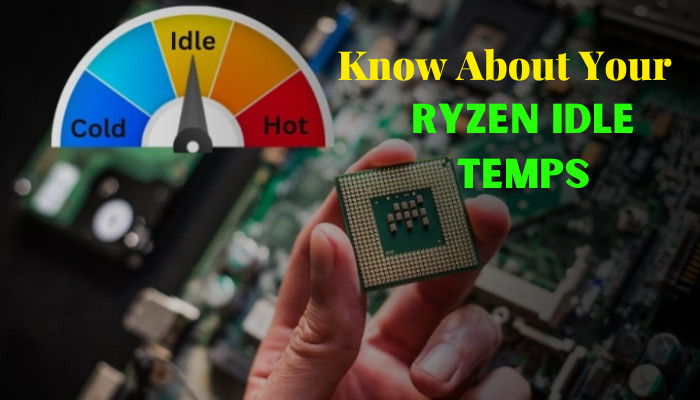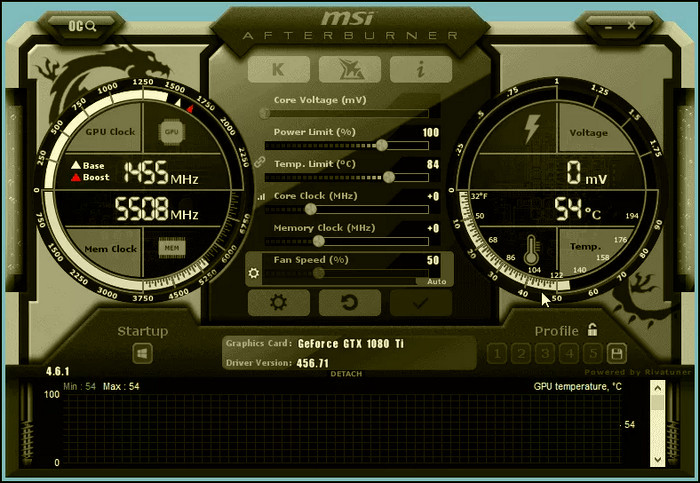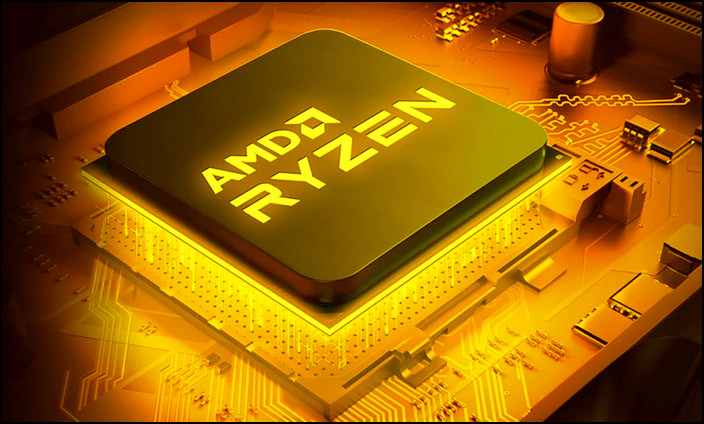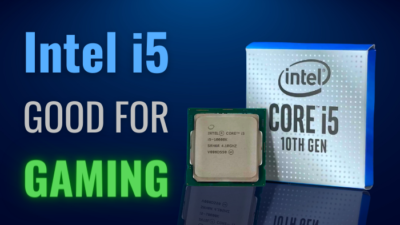Temperature is the biggest culprit for the degradation of silicon-based chips & which is why everyone stays concerned about their PC component’s temp,
Overall, in an idle scenario, a lower temp is expected. Yet Intel’s rival AMD’s Ryzen series tends to be a bit hotter even under rest conditions. In this article, I will demystify Ryzen’s idle temps and how to keep it in the safe zone. Let’s dive into it.
In this article, I will demystify Ryzen’s idle temps and how to keep it in the safe zone. Let’s dive into it.
What is The Temperature of Ryzen CPUs?
When AMD first introduced Ryzen back in December 2016, it revealed a greater lift-up performance than its previous Bulldozer technology.
Whether it’s the 1st gen’s Zen architecture which used a 14 nm technology node, or the latest Zen 4 architecture, which reduced the node down to 5 nm, many users report that they indicated high idle temperature.
But what’s an ideal temp when the CPU is inactive?
Generally, Ryzen idle temp should be around 40°C to 50°C or 104°F to 122°F. There are lots of variables, such as CPU cooler or casing airflow, that affect the temps. So to get an idea of how hot a CPU will be in idle, a general rule of thumb is adding 20°C more with the ambient temperature.
To get a well-extended lifespan for Ryzen CPU, the temperature needed to stay within a safe range.
Generally, the safe temp ranges from 40 °C to 85 °C. It can reach up to 90 °C, but it will start to thermal throttle & as the TjMax of Ryzen is 95 °C, the processor will heavily throttle at here & eventually shut down to protect the chip from burning.
How to Monitor Ryzen CPUs Temperature
You don’t wash the mouse pad every day, right? None does, including me.
Similarly, it’s no need to inspect your CPU temp every now & then. But tracking down the temp is crucial if you experience something critical.
Using BIOS mode or third-party apps, you can easily check CPU temperature. Also, the MSI Afterburner program lets you monitor CPU temperature while gaming.
To monitor how much heat a CPU is producing, there is various software that will help. You can use SpeedFan, Core Temp, or HWiNFO to observe the CPU’s temp. You can also check the processor’s temp in BIOS too. Here’s how you can follow CPU temp through HWiNFO. Download & open HWiNFO with sensors only. Look for the CPU section & you will find the processor’s Core Temp. With this software tracking current, minimum, maximum, & average values are possible.
Here’s how you can follow CPU temp through HWiNFO. Download & open HWiNFO with sensors only. Look for the CPU section & you will find the processor’s Core Temp. With this software tracking current, minimum, maximum, & average values are possible.
Now there is a catch. When comparing CPU temp from BIOS with 3rd-party software, you may notice a difference.
As this may confuse you, I’m clarifying the matter here. For AMD processors, there are two types of temp to monitor the CPU’s heat. One is the CPU temperature, which is the CPU socket’s temp. The other one is the Core temperature, which is measured by DTS.
This DTS (Digital Thermal Sensor) measures the outside heat of the processor. As heat is amplified through the thermal paste, it is usually hotter than CPU temperature.
Mostly, BIOS informs the CPU temperature & thus, it may show a lower value than software-obtained Core Temperature. So disregard the value & follow the software’s CPU temp, as this will be more accurate.
Is Ryzen Temp High at Idle?
There are miscellaneous reasons for Ryzen temps showing higher than normal at idle. However, you can hear that Ryzen stays warm at inactive. But in normal cases, this shows something is poking with the processor, whether it’s voltage or airflow.
Here are some reasons why your Ryzen temp can be high at idle:
- Bios Configurations: Depending on your BIOS setup, your idle processor temp can get higher. If Cool’n’Quiet is disabled with PBO (Precision Boost overdrive) on, chances are the temp will be high at the inactive stage. If there is a Zero Fan setting in BIOS & if it is enabled, it can also trigger a high idle temp due to a stopped fan.
- Airflow: Poor airflow also causes high CPU heat dissipation, as there will be not enough airflow which will throw away the hot air & intake fresh air to create a positive airflow.
- Case Style: Casing without proper airflow will trigger poor airflow. That being said, if the case has a glass front panel, it will not intake air properly & cause a hot environment inside the casing.
- Fan Positions: If there are not enough air intake or exhaust holes in your casing, it can set off high temp even when the chip is lazy. If you don’t install more intake fans, there will be negative airflow. This negative airflow will provoke a high temp.
- Defective CPU Cooler Fan: If the CPU cooler’s fan is defective, it may slow down or stops & which will cause high processor inactive temp, and even shut down your PC.
- Thermal Paste: Dried Thermal paste will drastically increase idle temp, as there will be no thermal conductivity. Thus, the chip can’t spread its heat to the cooler’s heatsink properly & raise the idle temp.
What to Do to Cooldown Ryzen Idle Temp?
Minimizing the high idle temp of Ryzen CPUs requires some maintenance like proper BIOS configuration, ensuring proper airflow, etc. Mitigating the issues that trigger high temp when the chip is inactive will reduce the temp.
Here are the steps you should follow to cool down your Ryzen:
- Configure BIOS: Set up BIOS correctly, so that power save options work properly for Ryzen CPUs. By using PBO 2 Curve Optimizer with negative voltage & Cool’n’Quiet on, you can reduce the chip’s idle temp. The curve optimizer works as an adaptive voltage and frequency scaler. Some BIOS has Eco Mode, enabling this also reduce the heat.
- Install Adequate CPU Cooler: If your CPU is using AMD’s stock stealth cooler, you need to upgrade to a beefy cooler. AMD’s stock Prism cooler sometimes works, but an aftercooler is always preferable.
- Clean Dust & Heatsink: Dust blocks heat to dissipates. CPU Cooler’s heatsink often covers with dust & it should be maintained once a month at least.
- Apply Good Thermal Paste: If you think there is good airflow, yet high idle temp, your dried thermal paste can be a reason. Changing to a good thermal paste & applying it properly greatly reduces the chip’s heat.
- Reduce Vcore Voltage: Lowering Vcore voltage is a guaranteed way to reduce the chip’s temp. Sometimes Ryzen comes with a high idle Vcore which causes the abnormal idle temp. Reducing the volt helps the issue.
These methods will fix the CPU over-temperature error.
Though there are some arguments that, higher idle temp prevents Thermal Fatigue & which is more beneficial to the longevity of the CPU. The reason is there will be no excessive thermal drop like going from 90 °C to 30 °C rather it refers to like 90°C to 50°C.
For more detailed information, go through the CPU temperature guide.
FAQs
Does Ryzen zen4 support DDR4 RAM?
Unfortunately, AMD’s new AM5 platform is limited to DDR5 RAM only. If you have to use DDR4 RAM, The AM4 platform is the only way for Ryzen.
Which series motherboard do I need to OC Ryzen?
You will need an X-Series motherboard such as X570, X670, or B-series like B450, or B550 to overclock Ryzen CPUs.
What does Curve Optimizer do?
Voltage Curve Optimizer is a kind of undervolting technique that is a part of PBO. It uses an algorithm where it fixed a frequency & lowers the voltage, thus increasing performance with less heat.
Can I OC with Ryzen Master?
From the Ryzen Master’s basic view, you can automatically overclock your CPU & it also lets you how much OC you want to apply.
Final Thought
Electronic goods are sensitive to heat & when it comes down to the CPU, it needs more attention. Because the processor is more damage prone if it overheats. Knowing the idle processor temp & maintaining the temp within a safe range is important for longevity.
Many users complain about high Ryzen idle temp, but usually, there are some reasons why they encounter that. In this article, I explained in depth about the Ryzen’s temp issue & how you can get escape from it.
If you have any further queries, don’t hesitate to leave a comment.




